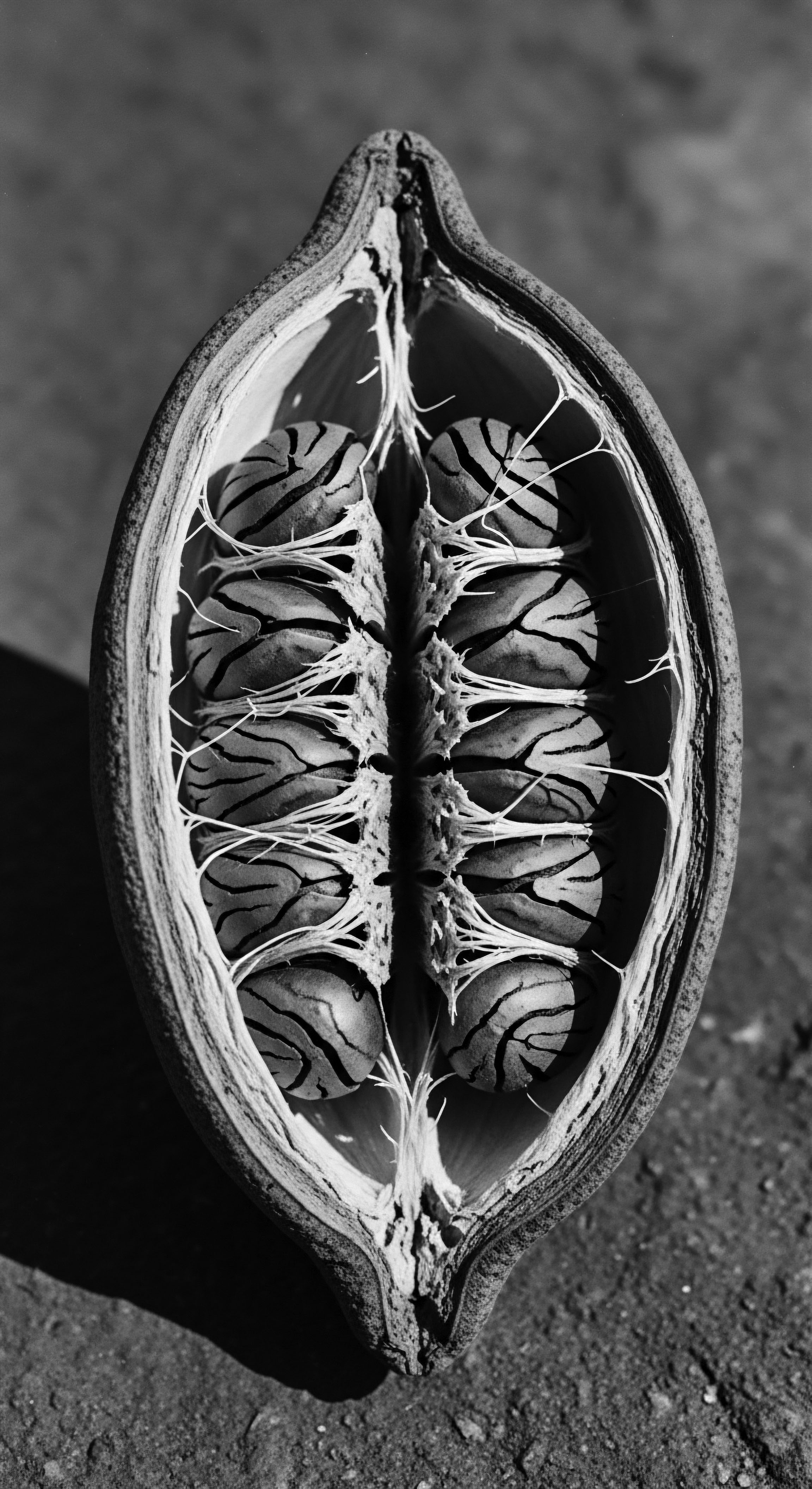
Fundamentals
The vitality of a strand, a silent testament to its lineage and lived experience, is intrinsically linked to its very building blocks. At the core of hair’s resilience lies its protein architecture, a marvel of biological design. The concept of Hair Protein Loss, at its most elemental, describes the diminishment or degradation of these vital protein components within the hair fiber.
This natural occurrence can be accelerated by external forces or internal imbalances, leading to a compromised structure. To comprehend this phenomenon is to acknowledge a subtle shift in the hair’s inherent strength, a whisper of vulnerability where once there was steadfastness.
Hair, particularly textured hair, is primarily composed of Keratin, a fibrous protein. This keratin forms a complex, helical structure, akin to a meticulously braided ancestral coiffure, providing both tensile strength and elasticity. When we speak of protein loss, we are referring to the disruption of these intricate keratin chains and the protective layers they form.
This disruption can manifest as microscopic fissures along the cuticle, the outermost protective layer, or deeper within the cortex, the hair’s inner core. The consequence is often a perceptible change in the hair’s tactile qualities and its ability to retain moisture, reflecting a departure from its optimal state of wellbeing.
From the earliest moments of human existence, the preservation of hair’s inherent strength has been a silent, yet profound, concern. Ancestral communities, long before the advent of modern scientific instruments, understood through observation and generational wisdom that certain practices fortified the hair against what we now identify as protein degradation. Their methods, often rooted in the abundance of the natural world, aimed to maintain the hair’s structural integrity, ensuring its capacity for growth and adornment. This foundational understanding, passed down through oral traditions and communal rituals, forms the bedrock of our present inquiry into hair’s enduring vitality.
Hair Protein Loss signifies a weakening of the hair’s fundamental keratin structure, impacting its resilience and ability to thrive.
The initial signs of protein loss often present subtly, much like the gentle shifting of desert sands, yet their cumulative effect can be significant. A lack of spring in the curl pattern, a tendency for strands to feel overly soft or mushy when wet, or an unusual amount of breakage during detangling can all point to a deficit in the hair’s protein reserves. For those with textured hair, where curl patterns are a defining characteristic, a loss of definition or an inability to hold a style might be among the first indications. These observations, though seemingly simple, carry the weight of generations of knowledge about hair’s optimal state.
Understanding this basic concept is the first step in honoring the strand’s inherent spirit. It prompts a deeper appreciation for the delicate balance that sustains hair health and encourages a mindful approach to its care. This fundamental insight lays the groundwork for recognizing the historical efforts of communities to preserve their hair’s strength and beauty, practices that resonate with contemporary scientific findings.

Intermediate
Moving beyond the basic delineation, the intermediate comprehension of Hair Protein Loss delves into the mechanisms that accelerate this structural compromise, particularly within the unique architecture of textured hair. The spiraling, often elliptical nature of textured hair strands creates points of vulnerability along the cuticle, making it more susceptible to lifting and damage compared to straighter hair types. This inherent characteristic means that textured hair, a legacy of genetic diversity, often requires a more attentive approach to maintain its protein equilibrium.
Environmental stressors play a significant role in this ongoing challenge. Exposure to harsh sunlight, strong winds, or even the friction from certain fabrics can gradually erode the hair’s outer protective layers. Similarly, mechanical manipulation, whether through vigorous brushing, tight styling, or even the simple act of washing, can induce micro-tears in the cuticle, creating pathways for protein leakage.
Consider the ancestral practice of braiding and coiling, which served not only as adornment but also as a protective measure against such environmental and mechanical aggressors, implicitly preserving the hair’s protein integrity. These styles shielded the delicate strands, allowing them to retain their vital composition.
The chemical processes introduced to hair, both historically and in contemporary times, represent another potent catalyst for protein loss. Hair dyes, bleaching agents, and particularly chemical relaxers operate by altering the hair’s internal protein bonds to achieve desired structural changes. While these treatments offer stylistic versatility, their very action can lead to a significant depletion of keratin, leaving the hair weakened and prone to breakage. The historical adoption of such treatments within Black and mixed-race communities, often driven by societal pressures for conformity, carries a profound significance in the context of protein preservation.
The unique structure of textured hair, coupled with environmental and chemical exposures, intensifies its susceptibility to protein degradation.
Ancestral wisdom, often transmitted through the generations, held profound insights into mitigating these challenges. The deliberate use of natural ingredients—plant extracts, nourishing oils, and rich butters—was not merely cosmetic; it represented an intuitive understanding of restorative care. These practices, passed down through oral traditions and communal gatherings, sought to replenish the hair, to seal the cuticle, and to impart strength, effectively acting as early forms of protein support, even if the precise scientific terminology was absent. The application of oils like Shea Butter or Argan Oil, for instance, forms a protective barrier that reduces friction and helps to smooth the cuticle, thereby minimizing protein loss.
The deep conditioning rituals prevalent in many textured hair traditions also speak to this intuitive knowledge. The prolonged application of nutrient-rich concoctions, often accompanied by warmth, allowed ingredients to penetrate the hair shaft, providing both moisture and, in some cases, plant-derived proteins that could temporarily reinforce weakened strands. These rituals were not simply about aesthetics; they were acts of care, of preservation, and of honoring the inherent resilience of the hair, echoing a deep connection to ancestral practices.
Understanding Hair Protein Loss at this intermediate level requires recognizing the interplay between the hair’s unique structural characteristics, the external forces it encounters, and the enduring wisdom of traditional care practices that sought to maintain its strength. It invites a thoughtful re-evaluation of how contemporary practices can be informed by these historical insights, fostering a more harmonious relationship with textured hair.
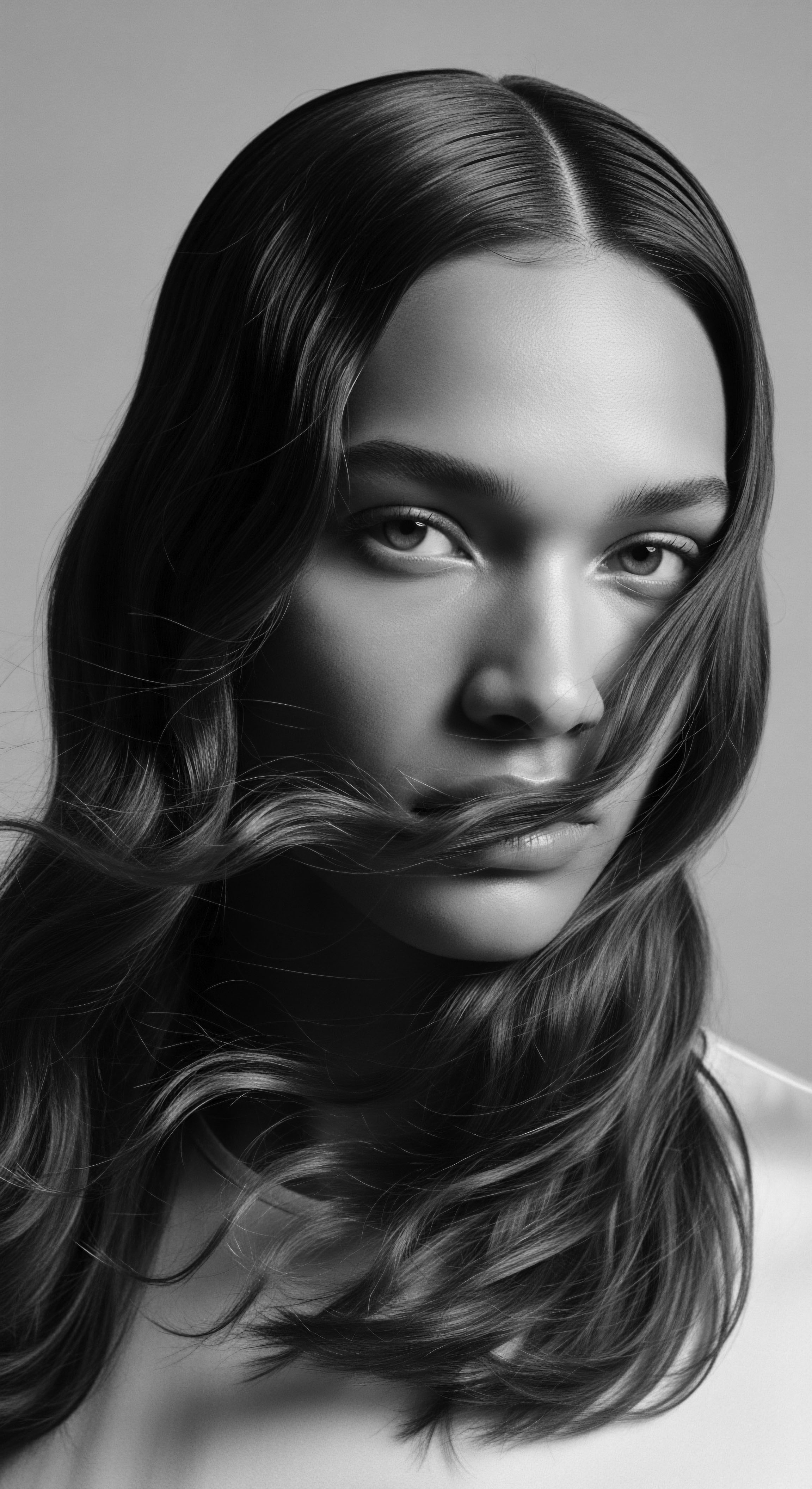
Academic
The academic delineation of Hair Protein Loss transcends a simple description, offering a rigorous examination of its biochemical underpinnings, the unique vulnerabilities inherent to textured hair, and its profound historical and sociological implications within communities of Black and mixed-race heritage. At its most precise, Hair Protein Loss refers to the irreversible degradation and efflux of polypeptide chains, primarily Keratin, from the hair fiber. This process often begins with the disruption of the hair’s outermost protective layer, the cuticle, composed of overlapping, flattened cells. When the cuticle is lifted or damaged, the highly organized keratin matrix of the cortex, which provides the hair’s primary tensile strength and elasticity, becomes exposed and susceptible to enzymatic digestion, oxidative stress, and mechanical abrasion.
The unique helical geometry and often irregular cross-sectional shape of textured hair strands, characterized by tight coils, curls, and kinks, contribute significantly to their predisposition to protein loss. These structural attributes result in numerous points of torsional stress along the hair shaft, particularly at the curves of the helix. Such stress points are inherently weaker, making the cuticle more prone to fracture and lifting, thereby increasing the hair’s porosity.
Elevated porosity, in turn, facilitates the leaching of vital protein components and internal lipids, leading to a diminished mechanical integrity and an increased susceptibility to breakage. The intricate arrangement of disulfide bonds within the keratin, which are critical for hair’s strength, can also be disproportionately affected by external forces in textured hair, further exacerbating protein depletion.

Historical Interventions and Protein Integrity
Throughout history, the preservation of hair protein, though not understood in modern biochemical terms, was a central tenet of ancestral hair care. Traditional African hair practices, for instance, prioritized methods that minimized manipulation, offered environmental protection, and utilized natural emollients and strengthening agents. Practices such as meticulous braiding, intricate coiling, and the liberal application of natural oils and butters like Shea Butter or Cocoa Butter served as protective barriers, reducing friction and sealing the cuticle, thereby intuitively mitigating protein loss. These methods reflected an empirical understanding of hair’s delicate nature and the necessity of safeguarding its inherent strength.
However, the advent of chemical hair relaxers in the 20th century marked a significant historical turning point, introducing a widespread and profound source of protein degradation within Black communities. Driven by pervasive Eurocentric beauty standards, chemical relaxers, primarily alkaline formulations (e.g. sodium hydroxide, calcium hydroxide), function by permanently altering the hair’s disulfide bonds.
This process involves the breaking of these critical cross-links, followed by their re-formation in a straightened configuration. While achieving the desired aesthetic, this chemical restructuring causes irreparable damage to the keratin matrix, leading to a substantial and continuous efflux of protein from the hair fiber.
A significant body of scientific literature, such as the comprehensive work by Robbins (2012), details the severe structural consequences of chemical relaxers on hair. The chemical disruption of disulfide bonds and the subsequent swelling of the hair shaft during the relaxing process lead to a significant loss of internal protein, rendering the hair highly porous, brittle, and prone to breakage. This historical imposition of chemically induced protein loss, often pursued at great personal and financial cost, stands as a poignant case study of how societal pressures can directly impact the biological integrity of textured hair, disconnecting individuals from ancestral practices that honored hair’s natural state. The long-term consequences include chronic dryness, reduced elasticity, and persistent breakage, requiring continuous restorative care.
| Ancestral Practice Protective Styling (Braids, Coils, Locs) |
| Implicit Protein Preservation Mechanism Shields strands from environmental friction and mechanical stress, maintaining cuticle integrity. |
| Historical Impact on Textured Hair Preserved natural hair strength and length, reflecting cultural identity and resilience. |
| Ancestral Practice Natural Oil/Butter Application (Shea, Cocoa, Palm) |
| Implicit Protein Preservation Mechanism Forms a hydrophobic barrier, reducing moisture loss and friction, smoothing cuticle scales. |
| Historical Impact on Textured Hair Provided deep nourishment, improved elasticity, and enhanced natural luster. |
| Ancestral Practice Herbal Rinses/Treatments (Aloe, Hibiscus, Chebe) |
| Implicit Protein Preservation Mechanism Delivered conditioning agents and antioxidants, supporting scalp health and fiber strength. |
| Historical Impact on Textured Hair Contributed to overall hair vitality, often with spiritual or communal significance. |
| Ancestral Practice The wisdom of past generations intuitively protected hair's core strength, a stark contrast to later chemically induced challenges. |
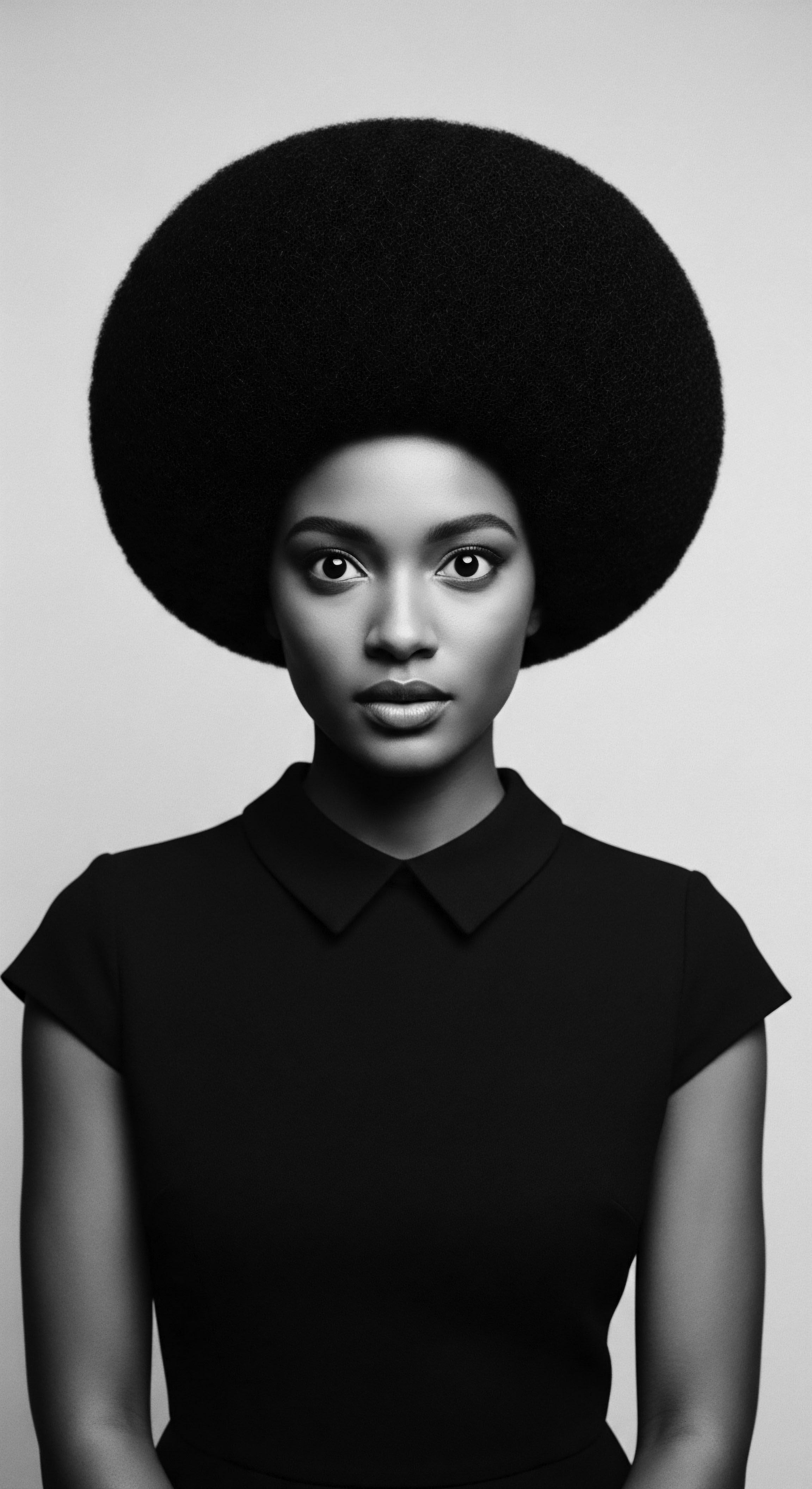
Modern Scientific Understanding and Cultural Reverberations
Contemporary research continues to explore the intricate relationship between textured hair morphology and protein dynamics. Studies utilizing advanced microscopy and spectroscopic techniques have revealed the distinct patterns of cuticle lifting and cortical damage in various textured hair types, often correlating with increased protein loss. This scientific elucidation validates the observations of generations past, affirming the unique care requirements of these hair structures.
Academic inquiry reveals the profound structural vulnerabilities of textured hair to protein loss, historically exacerbated by chemical treatments.
The implications of this academic understanding extend beyond the biochemical realm into the social and cultural spheres. Recognizing the historical trajectory of protein loss, particularly its exacerbation by external forces like chemical processing, empowers individuals to make informed choices that honor their hair’s inherent structure and ancestral legacy. It encourages a shift towards practices that prioritize protein integrity, drawing inspiration from both cutting-edge science and time-honored traditions. The ongoing discourse surrounding natural hair movements and the rejection of chemically altering treatments represents a powerful reclamation of hair health and cultural identity, directly addressing the legacy of protein degradation.
Understanding Hair Protein Loss from an academic vantage point allows for a nuanced appreciation of its complex etiology, its specific manifestation in textured hair, and its deep historical roots within Black and mixed-race experiences. This perspective fosters a more comprehensive approach to hair care, one that is scientifically informed, culturally sensitive, and deeply respectful of the strand’s enduring journey.
- Keratin Structure ❉ The primary protein in hair, forming a complex alpha-helical structure crucial for tensile strength.
- Cuticle Damage ❉ The lifting or erosion of the outer protective layer, exposing the inner cortex to protein loss.
- Disulfide Bonds ❉ Strong chemical linkages within keratin that are critically important for hair’s structural stability and are targeted by chemical relaxers.
- Hair Porosity ❉ The hair’s ability to absorb and retain moisture, often increased by protein loss due to a compromised cuticle.
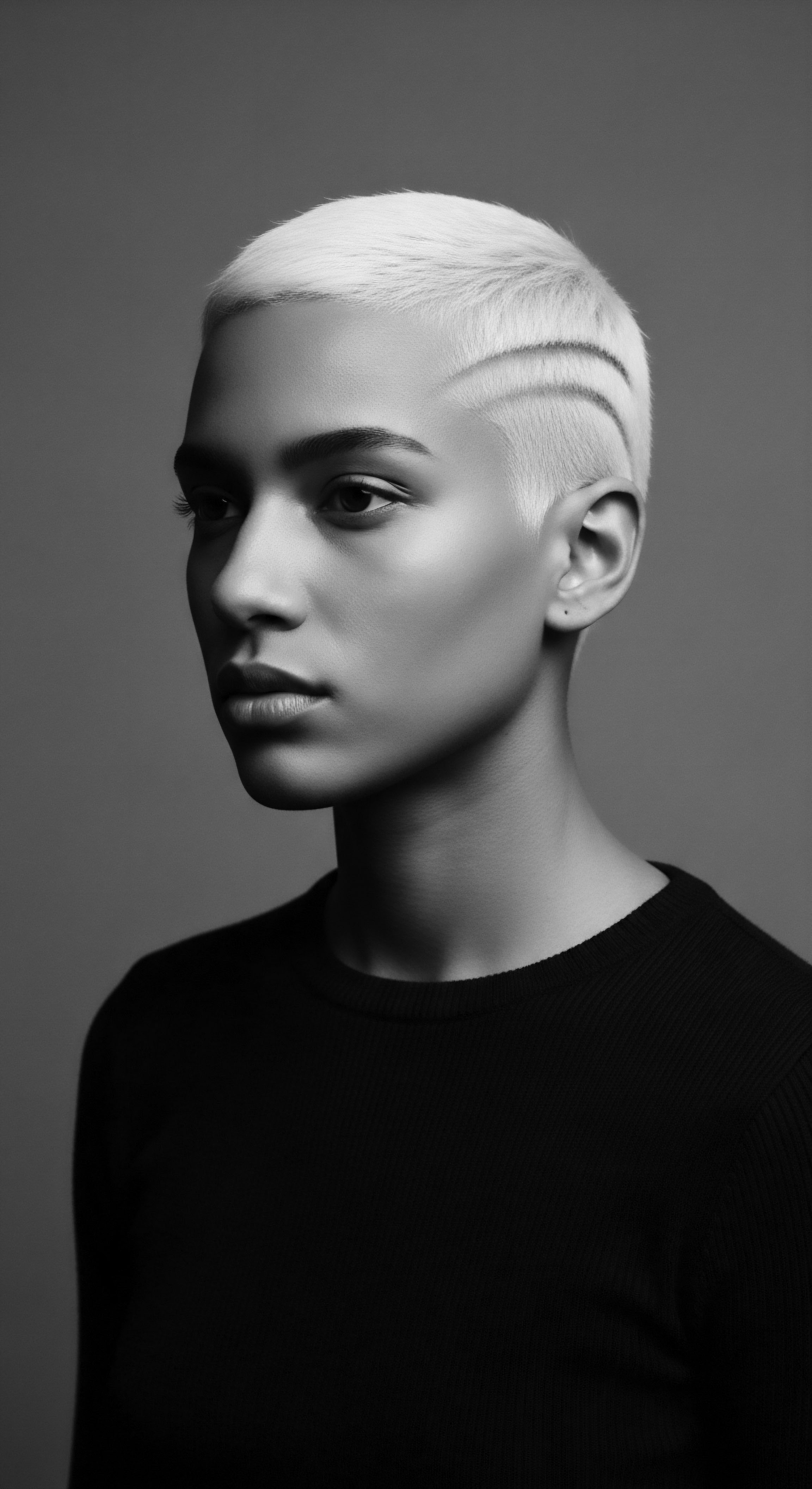
Reflection on the Heritage of Hair Protein Loss
The journey through the intricate landscape of Hair Protein Loss, from its elemental biology to its profound historical and cultural resonance, compels us to pause and consider the enduring spirit of the strand. It is a meditation on resilience, a quiet acknowledgment of the challenges faced by textured hair throughout generations, and a vibrant celebration of the wisdom that has always sought to preserve its integrity. The very notion of protein loss in textured hair becomes more than a scientific concept; it transforms into a narrative thread, weaving through ancestral hearths where remedies were whispered, across oceans where hair became a map of resistance, and into contemporary spaces where identity is powerfully proclaimed through every coil and curl.
To comprehend the loss of hair’s vital proteins is to understand a legacy of care, sometimes interrupted, sometimes rediscovered, but always present. The hands that braided, the oils that anointed, the rituals that sustained—these were not merely acts of grooming; they were profound expressions of self-preservation, community solidarity, and a deep, intuitive connection to the natural world. They were responses to the hair’s intrinsic needs, acts of reverence for the very fiber that adorned and defined. This deep heritage reminds us that the quest for hair health is not a modern invention but a continuous dialogue with the past, a respectful inquiry into the wisdom embedded in our lineage.
Understanding Hair Protein Loss illuminates a rich heritage of resilience and wisdom, connecting ancestral practices to the enduring spirit of textured hair.
The enduring significance of Hair Protein Loss within the context of textured hair extends beyond scientific understanding; it touches the very core of identity. It speaks to the historical pressures that often compelled individuals to chemically alter their hair, sacrificing its natural protein structure in pursuit of societal acceptance. Yet, it also heralds the powerful reclamation of natural textures, a conscious return to practices that honor the hair’s inherent design and preserve its protein integrity. This contemporary movement, a vibrant resurgence of ancestral appreciation, stands as a living testament to the unwavering spirit of textured hair and the communities it represents.
The future of textured hair care, viewed through the lens of protein preservation, is a harmonious blend of ancient wisdom and contemporary scientific discovery. It invites us to listen to the whispers of our ancestors, to heed the lessons learned from generations of care, and to apply modern insights to cultivate environments where every strand can thrive. The understanding of Hair Protein Loss, therefore, becomes a beacon, guiding us towards a future where textured hair is not merely cared for, but profoundly celebrated, its strength honored, and its heritage perpetually cherished. It is a commitment to the Soul of a Strand, ensuring its story continues to unfold with vitality and grace.
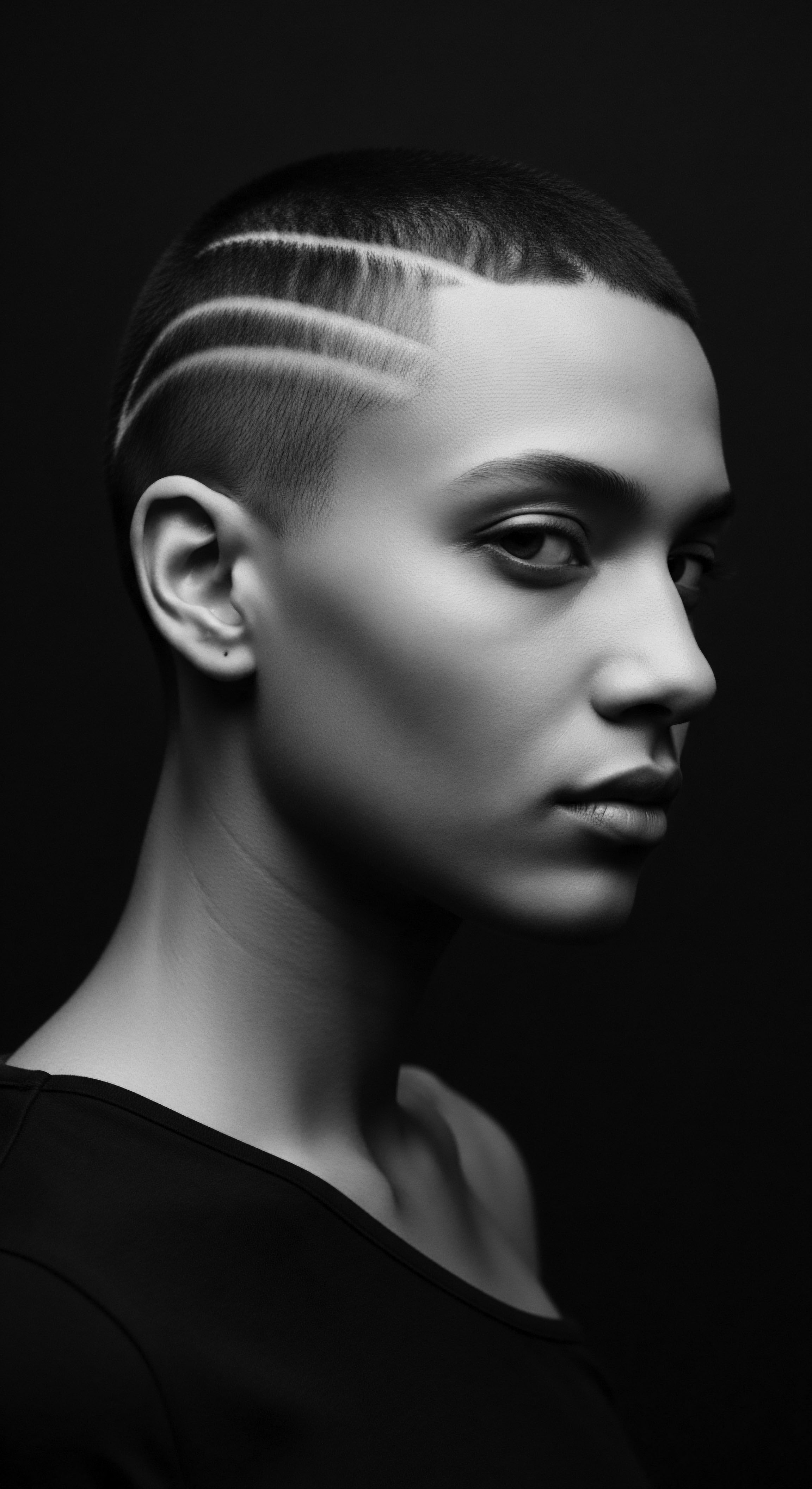
References
- Robbins, C. R. (2012). Chemical and Physical Behavior of Human Hair (5th ed.). Springer.
- Byrd, A. D. & Tharps, L. D. (2014). Hair Story ❉ Untangling the Roots of Black Hair in America. St. Martin’s Press.
- Adeleke, T. (2019). African Hair and Beauty ❉ A History of Hair in Africa. Routledge.
- Grier, S. A. & Grier, M. R. (2009). African American Hair Care and Hair Loss ❉ A Clinical and Cultural Guide. McGraw-Hill Professional.
- Gittens, S. (2020). Natural Hair ❉ The Definitive Guide to a Healthy Head of Hair. HarperCollins.
- Khumalo, N. P. & Mkhize, N. (2018). The Science of Black Hair ❉ A Comprehensive Guide to Hair Care and Styling for the African Diaspora. Independently published.
- Powell, D. (2007). Hair and Beauty in the Black Diaspora ❉ A Study in Gender, Culture, and Identity. Palgrave Macmillan.
- Burgess, C. (2012). Hair and Scalp Diseases ❉ A Practical Guide. Springer.
- McMichael, A. J. (2007). Hair Care and Cosmetics for Women of Color. Informa Healthcare.
- Gavazzoni Dias, M. F. R. (2015). Hair Cosmetics ❉ An Overview. International Journal of Trichology, 7(1), 2-15.
